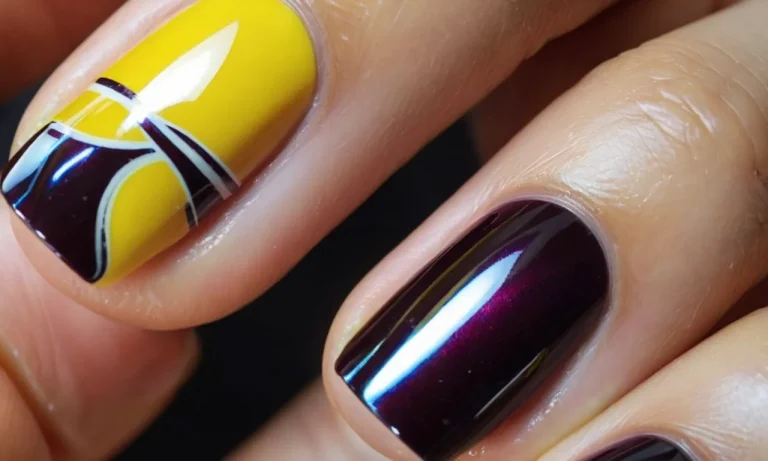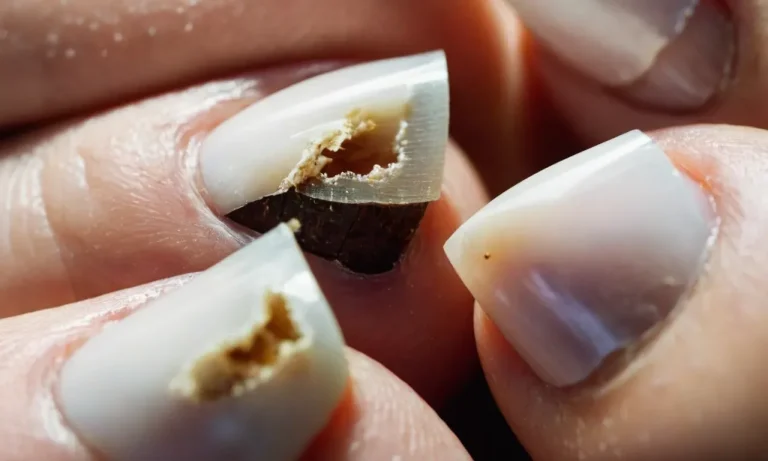How Much Does It Cost To Become A Nail Tech?
With the rising popularity of nail salons and the growing demand for skilled manicurists, many people wonder – how much does it really cost to become a nail tech? If you’re looking for a quick answer, the total cost can range from $400 to $4,000 depending on the school you choose and if you need to retake any exams.
In this comprehensive guide, we will break down the various expenses you can expect to incur on your journey to obtaining your nail technician license and starting your nail tech career. We will look at the costs for enrollment, tuition, kits and books, state board exams and licensing, and discuss ways to save money along the way.
Nail Technician School Costs
Enrollment Fees
The upfront enrollment fees to attend nail technician school typically range from $100-$500. This one-time fee covers your registration and processing into the program. Some schools charge higher enrollment fees closer to $1,000 for more comprehensive cosmetology programs that include nail technician training.
Tuition
Expect to pay between $3,000-$5,000 in tuition and fees for a dedicated nail technician program at a career college or trade school. Programs range from 300 hours up to 600 hours of training. By comparison, full cosmetology programs with a nail specialty can cost $10,000-$20,000+ for 1,200+ hours.
Paying for nail tech school is an investment that usually pays off in under a year after you start working in the field.
Books, Kits & Supplies
The upfront costs of nail tech school also include books, uniforms, and professional kits filled with all the tools and nail products you’ll need. A basic kit runs about $500. Upgraded kits with higher-end tools and supplies can cost over $1,000.
You’ll also need to budget for ongoing nail product costs for practicing manicures/pedicures throughout the program.
According to research by Beauty Schools Directory, the average total program cost including tuition, fees, books, and materials for nail technician school ranges from $3,500-$7,500. Programs take 3-6 months to complete if attending full-time. Many schools offer flexible part-time schedules as well.
Overall the investment is small compared to the earning potential. Licensed nail techs can make $25,000-$50,000+ per year including tips.
State Board Exam & Licensing Fees
State Board Exam
To become a licensed nail technician, you must first pass your state’s board exam. This comprehensive written and practical exam covers state regulations, sanitation procedures, nail structure, nail diseases and disorders, and the actual application of manicures, pedicures, acrylics, gels, and other services.
The exam fee itself ranges widely depending on your state. For example, it may cost around $180 in California, $225 in Florida, and just $55 in Utah. This fee allows you to take the exam once. If you fail and need to retake sections, you often must pay again.
State License
In addition to the exam cost, most states require you to apply for a nail technician license. Common requirements include:
- Completing the state-approved training hours (on average 300-600 hours)
- Submitting a license application form
- Passing a criminal background check
- Paying licensing fees
Nail tech license fees also vary but often cost between $25-$100 initially, with smaller annual renewals after that. For example, a new nail tech license may cost $50 in Oregon or $63 in Massachusetts, with $25 renewals each year after.
Some states and municipalities also require a separate business permit or license if you plan to work as an independent contractor or operate your own salon. These business licenses can range from $25 into the hundreds of dollars, depending on your state and city regulations.
In total, the costs directly related to becoming a certified and licensed nail tech range from approximately $250 on the low end up to $500 or more on the higher end, assuming you pass the state exam on your first attempt.
Of course, exam fees and licensing costs come after you’ve paid for the professional nail technician training itself. But with median earnings of over $27,000 per year and excellent job satisfaction reported by most manicurists, many would agree that the investment pays off if you’re passionate about nails!
Additional Expenses to Consider
Transportation
Getting to and from work is an essential expense for nail techs to consider. Here are some transportation costs to factor in:
- Gas – With a mobile nail tech business, you’ll likely be driving to clients’ homes or offices. Gas and vehicle maintenance are ongoing expenses.
- Public Transportation – If working in a salon, you may rely on public transportation like buses or trains. Remember to budget for daily or monthly passes.
- Parking – Many salons only have street parking, which may require paying for parking meters or purchasing long-term parking passes.
- Tolls – Depending on your location, you may incur bridge or highway tolls as part of your work commute.
Having reliable transportation is crucial for nail techs to get to appointments on time. Expenses can add up, so accurately calculate these costs when budgeting.
Professional Organizations & Associations
Joining a professional organization or association can be a worthwhile investment for nail techs. Here are some potential benefits:
- Access to continuing education – Many organizations offer workshops, conferences, online training, and more to help nail techs expand their skills.
- Networking – These groups provide ways to connect with fellow professionals in the nail industry for support.
- Advocacy – Organizations lobby on behalf of the profession and promote its interests.
- Discounts – Members may get savings on liability insurance, products, or other services.
Popular options to consider include the Professional Beauty Association and Nails Industry Association. Membership fees vary but tend to range from $50 – $250 annually. The investment can pay off through valuable professional development opportunities.
Continuing Education
Ongoing training is essential for nail technicians to refine techniques, learn new trends, and provide excellent service. Here are some continuing education expenses to factor in:
- Workshops or classes – Hands-on programs for specific skills like acrylics, nail art, or pedicures may cost $100 – $600 per workshop.
- Conferences – Multi-day conferences offer seminars, vendors, and networking. Registration fees typically run $200 – $500.
- Online courses – Self-paced online programs on business, technique, and other topics can range from $20 for short courses up to $1,000 for in-depth certificate programs.
Continuing education allows nail techs to expand their skillsets and command higher fees from clients. While it requires an investment, ongoing training is key for success and staying current in an evolving industry.
Ways to Reduce Nail Tech School Costs
Choose Community College
Opting for a community college nail tech program instead of a private beauty school is one of the best ways to save money. Community colleges offer quality training for a fraction of the cost – we’re talking thousands less.
The coursework and licensing prep is similar, so you won’t be sacrificing a quality education. It’s a budget-friendly path to getting your nail tech license.
Look for Scholarships and Grants
Scholarships and grants help significantly trim down the cost of nail tech school. Spend time researching what’s available both locally and nationally. Some options may include beauty school scholarships from private organizations or state-funded career programs.
Also check with the school itself to see if they offer any internal financial assistance programs.
Buy Used Books and Supplies
Textbooks and nail tech kits can be expensive, sometimes costing over $1000. Consider buying used books and supplies to save a ton. Check with prior graduating classes to see if they have any materials to sell. You can also find discounted kits and books on eBay and Amazon.
As long as the supplies are still in good condition, you shouldn’t compromise on education.
Get a Part-Time Job
Getting a part-time gig while in nail tech school can offset some of the tuition and materials costs. Most programs are less than a year, so picking up a temporary job is doable. The key is balancing working limited hours with keeping up on demanding classwork.
A flexible job like dog walking, retail, or coffee shop barista allows you to work shifts that don’t conflict with school.
Conclusion
Becoming a licensed nail tech does require an investment of time and money. However, the costs can vary widely depending on the school you choose and your ability to obtain financial assistance. With some smart planning, you can keep your total expenses under $2,000 in most cases.
The earnings potential as a nail tech makes this a very worthwhile career path if you’re artistically inclined and enjoy working with people. Follow these tips to keep your costs down as you gain the education and training needed to begin an exciting career in the nail industry!







